How to propagate dahlia cuttings: get amazing blooms without the price tag
This easy step-by-step guide on how to propagate dahlia cuttings will have your beds filled with these glorious blooms at no extra cost
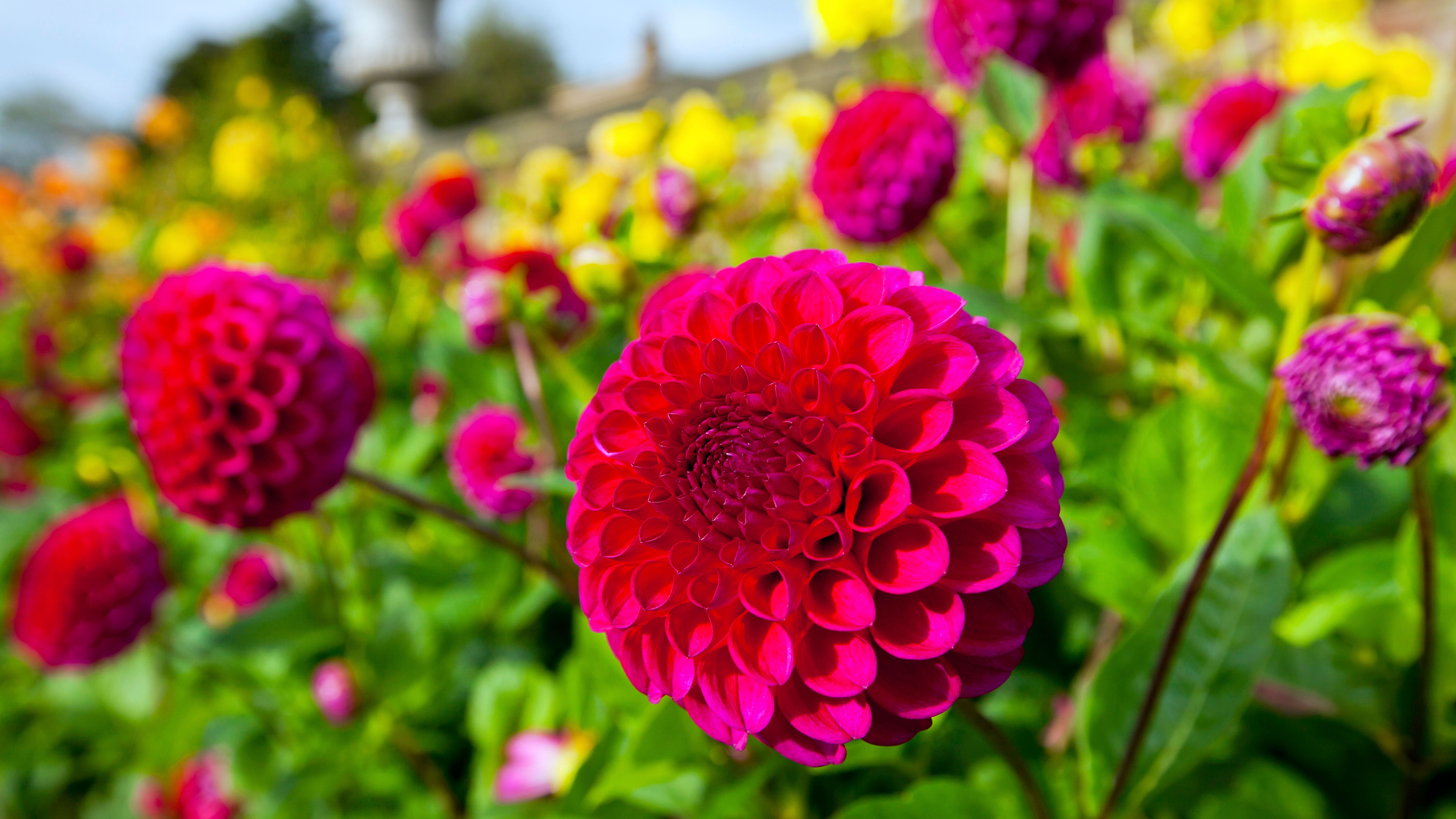

Learn how to propagate dahlia cuttings in early spring and you can easily (and cheaply) multiply the number of dahlias in your garden each summer and enjoy an even more impressive display of incredible blooms.
It is almost impossible to picture a summer garden without the vibrant colours of dahlias. They bloom in brilliant shades and add a stunning focal point to any space, but as you'll know if you're up to speed with our advice on how to grow dahlias, these hot favourites don’t take kindly to sullen, wet winters. If you live in a climate that has frosts over winter, your dahlias tubers will need to spend the colder months under cover somewhere that’s frost-free.
Those that successfully survive over the winter get ready for to throw out new shoots in spring. Some of these shoots can be removed and used to create new plants – it’s a simple and economical way of keeping your garden and containers stuffed with colour. So we've put together this handy step by step for you so you can get more plants for free by using some of the dahlia shoots as softwood cuttings.
Dahlia tubers which have been potted up will start to shoot in March time but should be kept under cover for a few more weeks until the weather gets milder before they’re hardened off and planted out in the borders and large pots. So read on for a foolproof guide on how to propagate dahlias.
You will need:
- Dahlia tubers that are starting to shoot
- Sharp knife
- Rooting compound
- Plant pots
- Seed and cuttings compost
- Perlite
- Clear plastic bag
Step one: find the new shoots
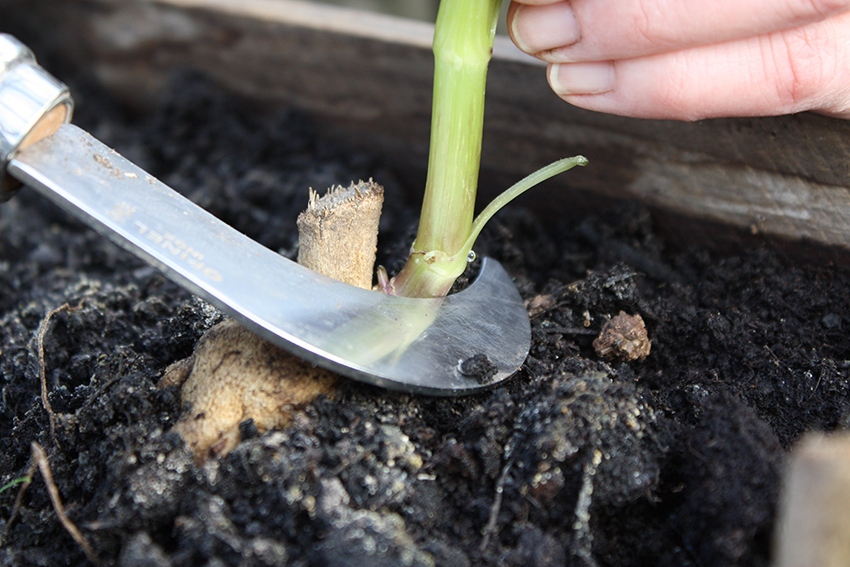
New shoots should be appearing on your dahlia tubers around March time and they can be used to make more plants. Select strong, healthy shoots that are around 8cm (3in) long. Cut them from the tuber (leaving a little bit of the tuber attached) using a clean, sharp knife. Remove any of the lower leaves from the shoot.
Step two: prep your cuttings
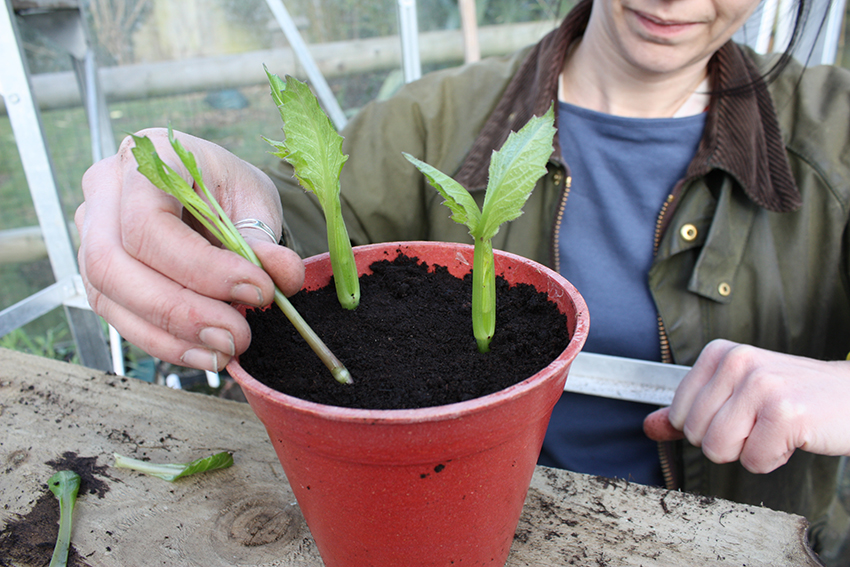
Dip the cut ends of the shoot cuttings into fresh rooting compound or powder to boost root development. Tap off any excess. Insert the cuttings around the edge of a pot of dampened seed and cuttings compost that has been mixed with perlite.
Step three: get your dahlia cuttings growing
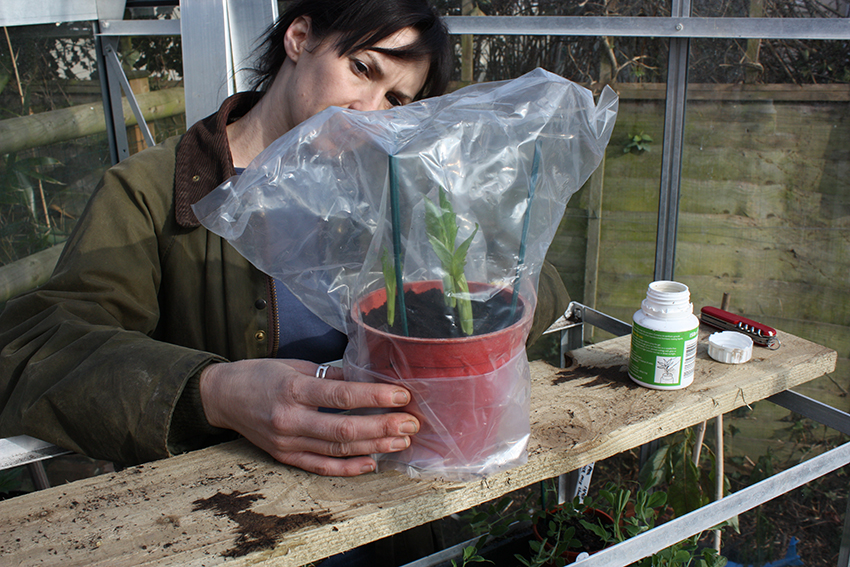
Cover the pot with a clear plastic bag and place it somewhere warm and light but out of direct sunlight. It's a good idea to use an elastic band to keep the plastic bag in place.
The cuttings should start to root and grow after a few weeks. You can tell that the cuttings have taken and developed roots when they start to grow.
Step four: plant out your cuttings
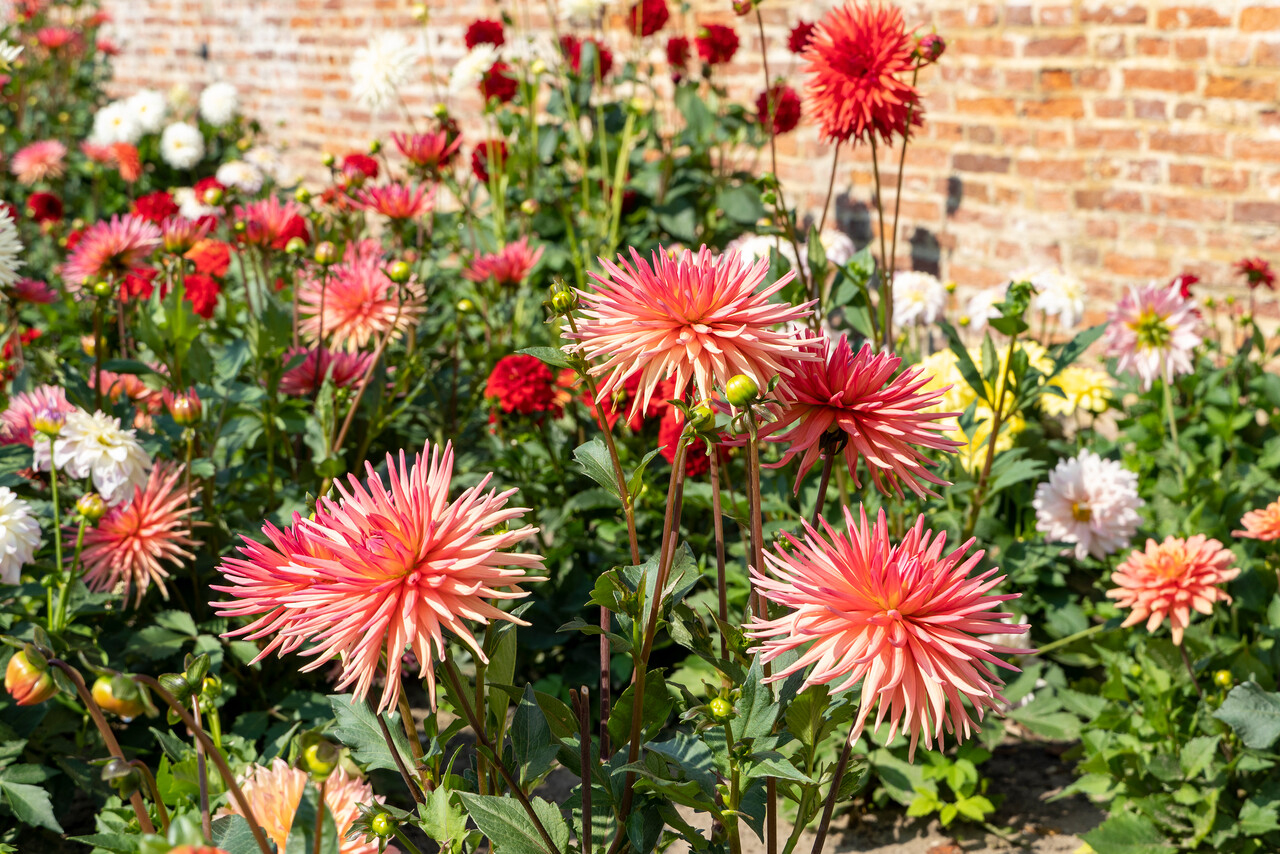
Once your cutting are big enough, you need to harden them off for several weeks before you plant them in the garden. For example, if they have been growing on a windowsill or in a heated greenhouse, then you can move them to a cold frame or unheated greenhouse first. After a couple of weeks, you can increase the ventilation (by opening the lid of the cold frame for example) or placing the plants outside during the day and putting them back undercover at night. You can find the best mini greenhouse for this job in our buying guide.
Once the cuttings have acclimatised to the weather, they can be planted out in the garden. Make sure that the risk of any late frosts has passed before you do this though.
If you ensure your cuttings are well fed and watered, you should find that they will flower in the same year. You do need to watch out for slugs, however, as they will love to snack on dahlia cuttings. Our guide on how to get rid of slugs in the garden has lots of useful solutions you can try.
Love the idea of getting lots more plants for free using other varieties of plants in your garden? Our guide on how to take cuttings from plants is packed with lots of useful tips.
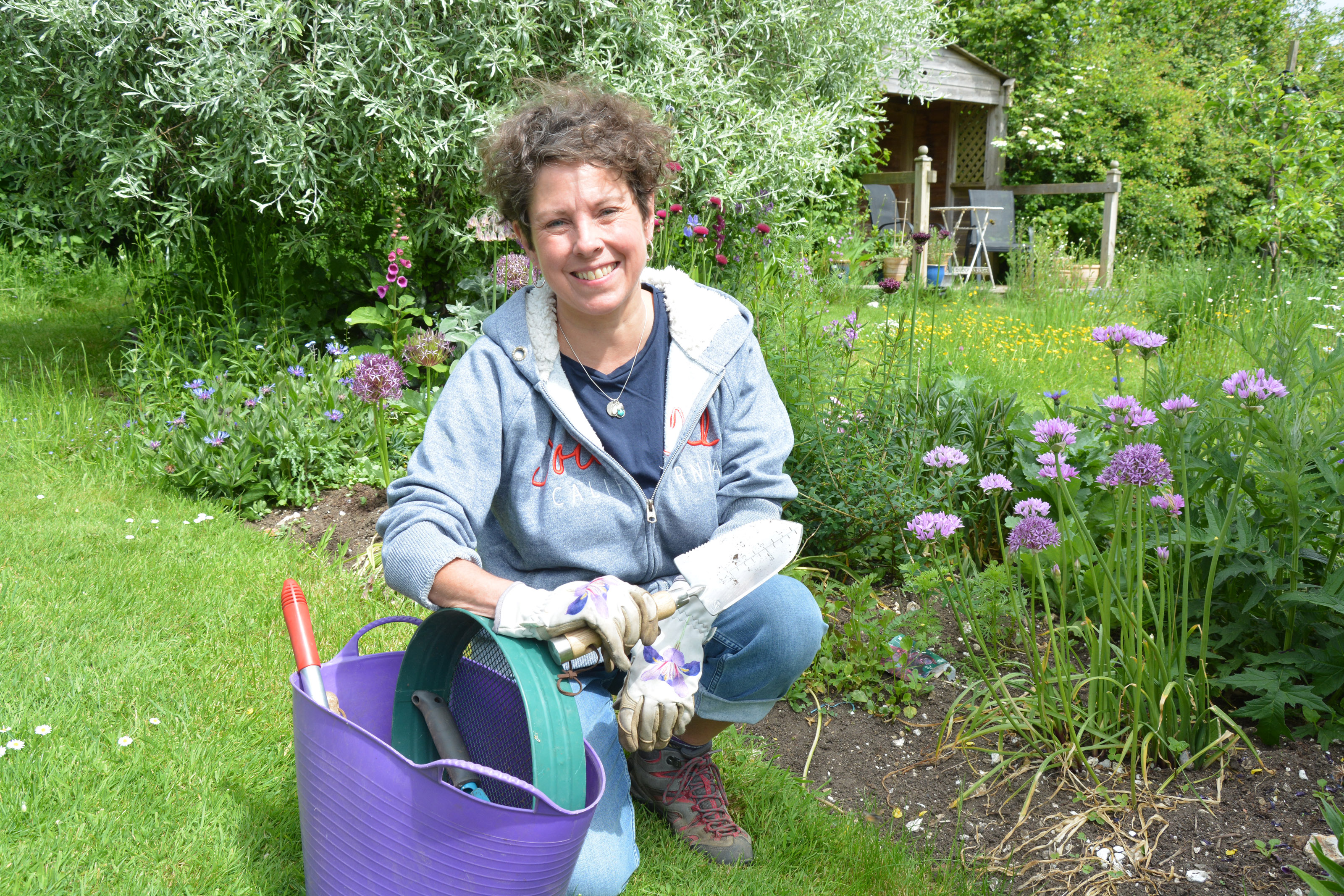
Ruth is the gardening editor of Amateur Gardening magazine and spends her working days carrying out, writing about and photographing the tasks the readers should be carrying out each week, as well as testing many of the new products that arrive on the gardening market. She is horticulturally trained, with a qualification from the Royal Horticultural Society.
